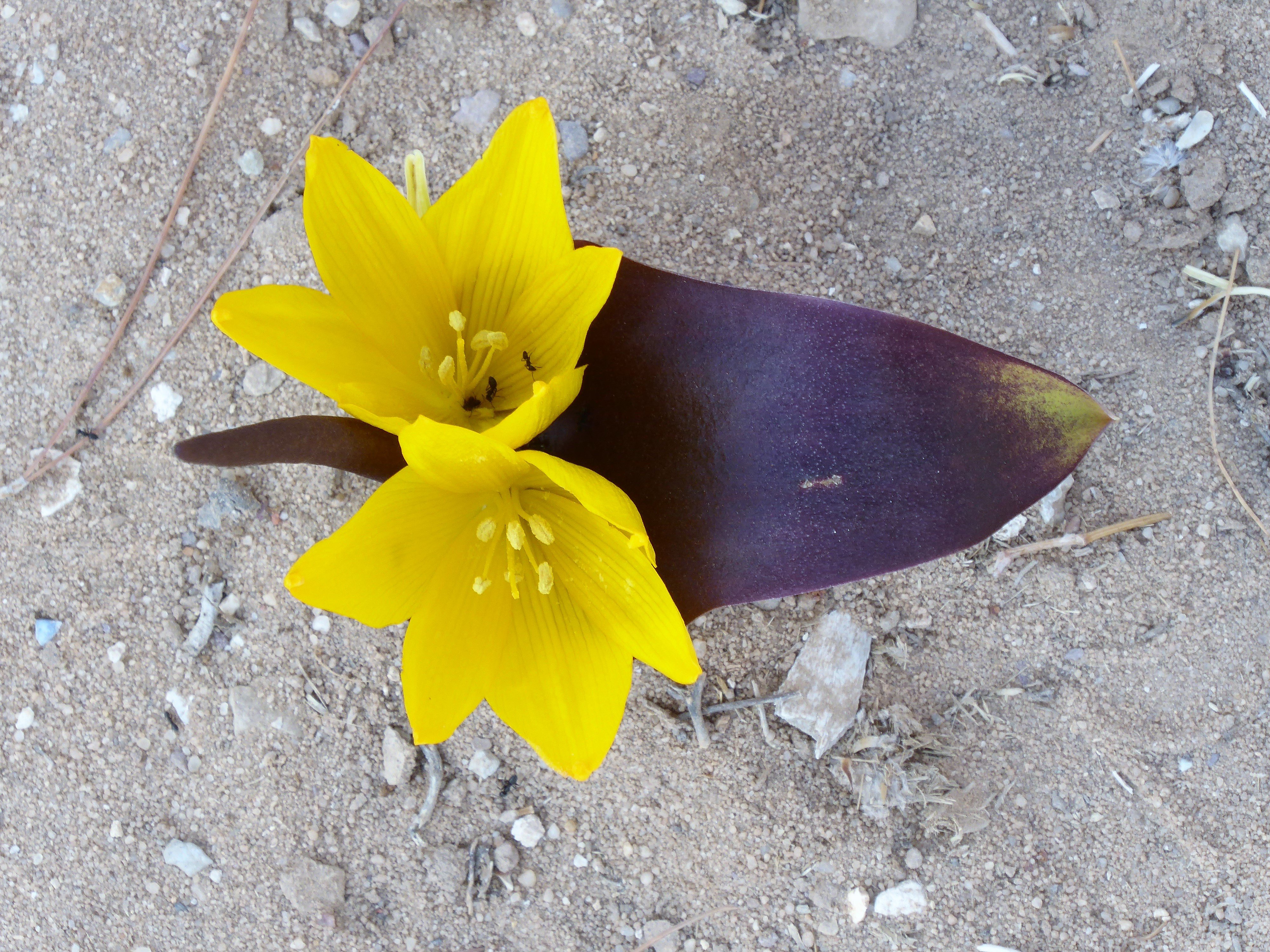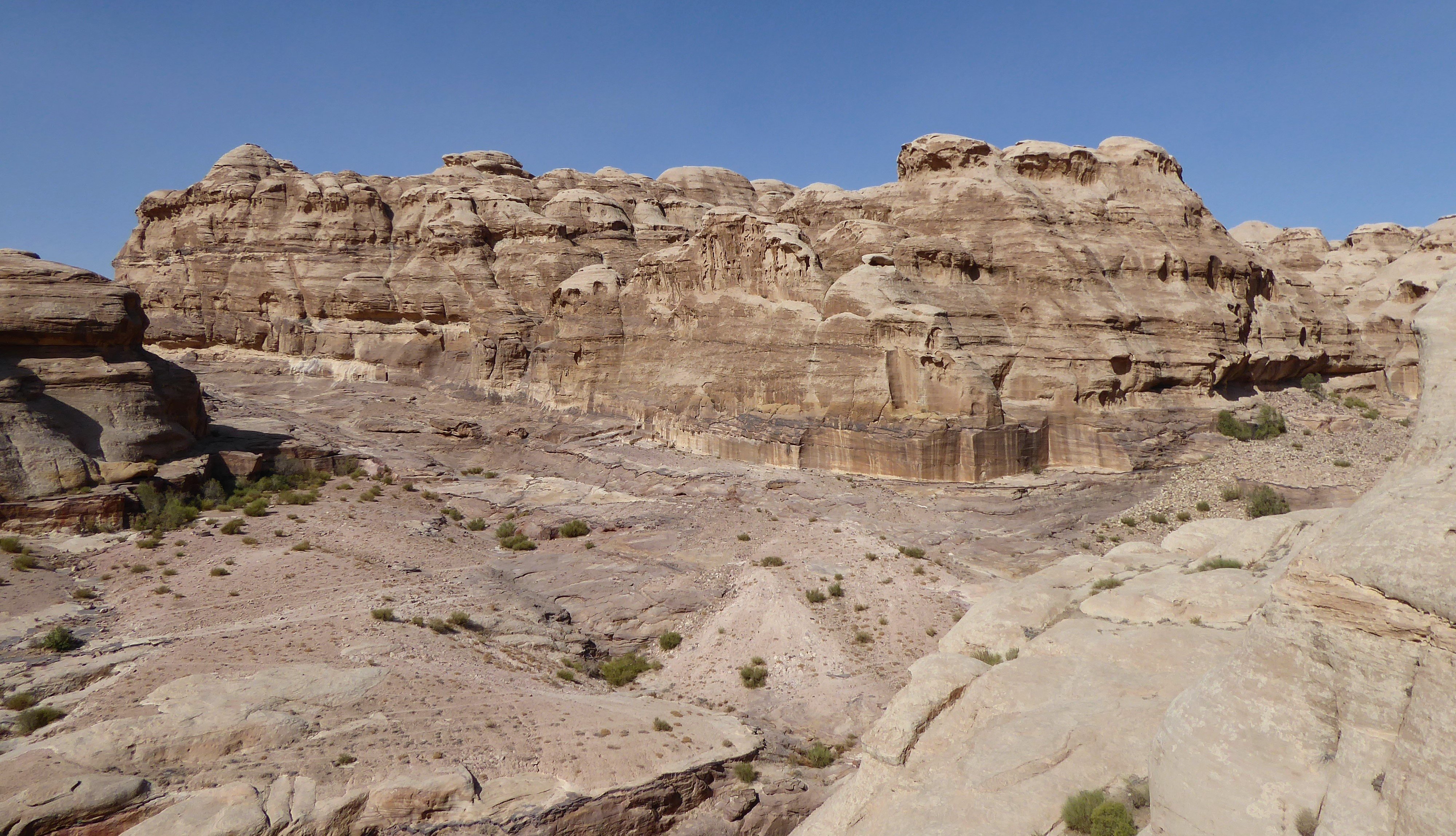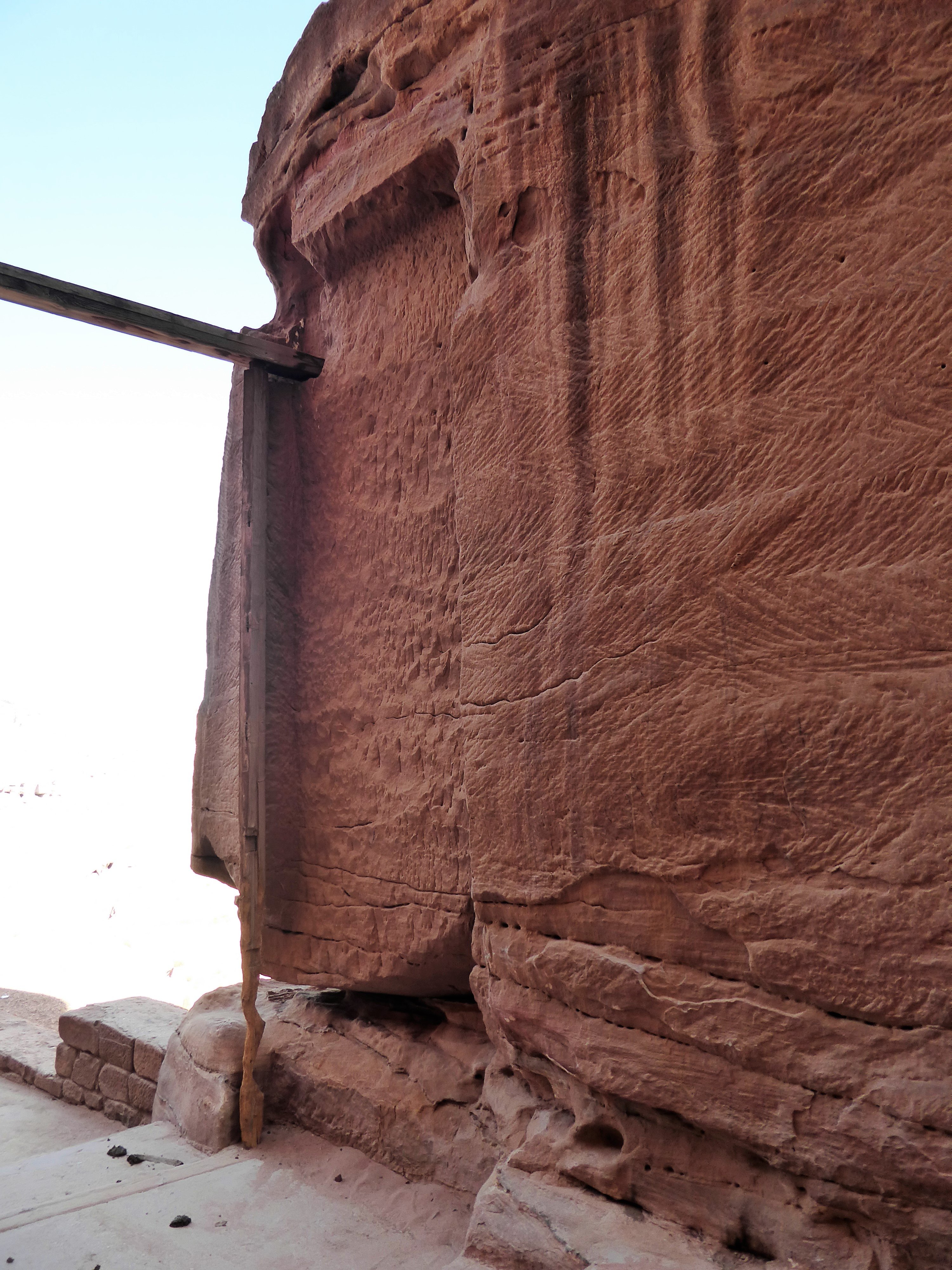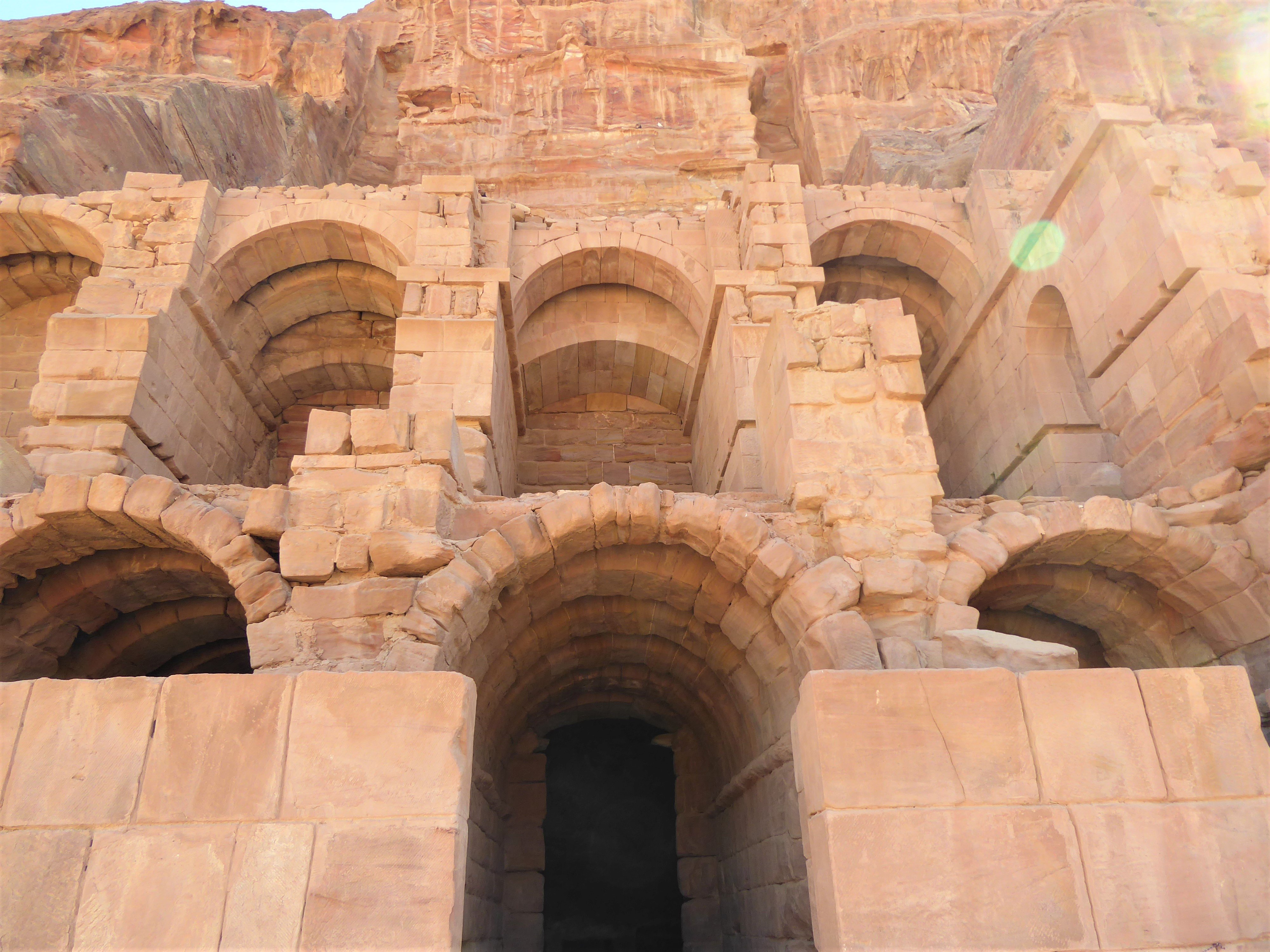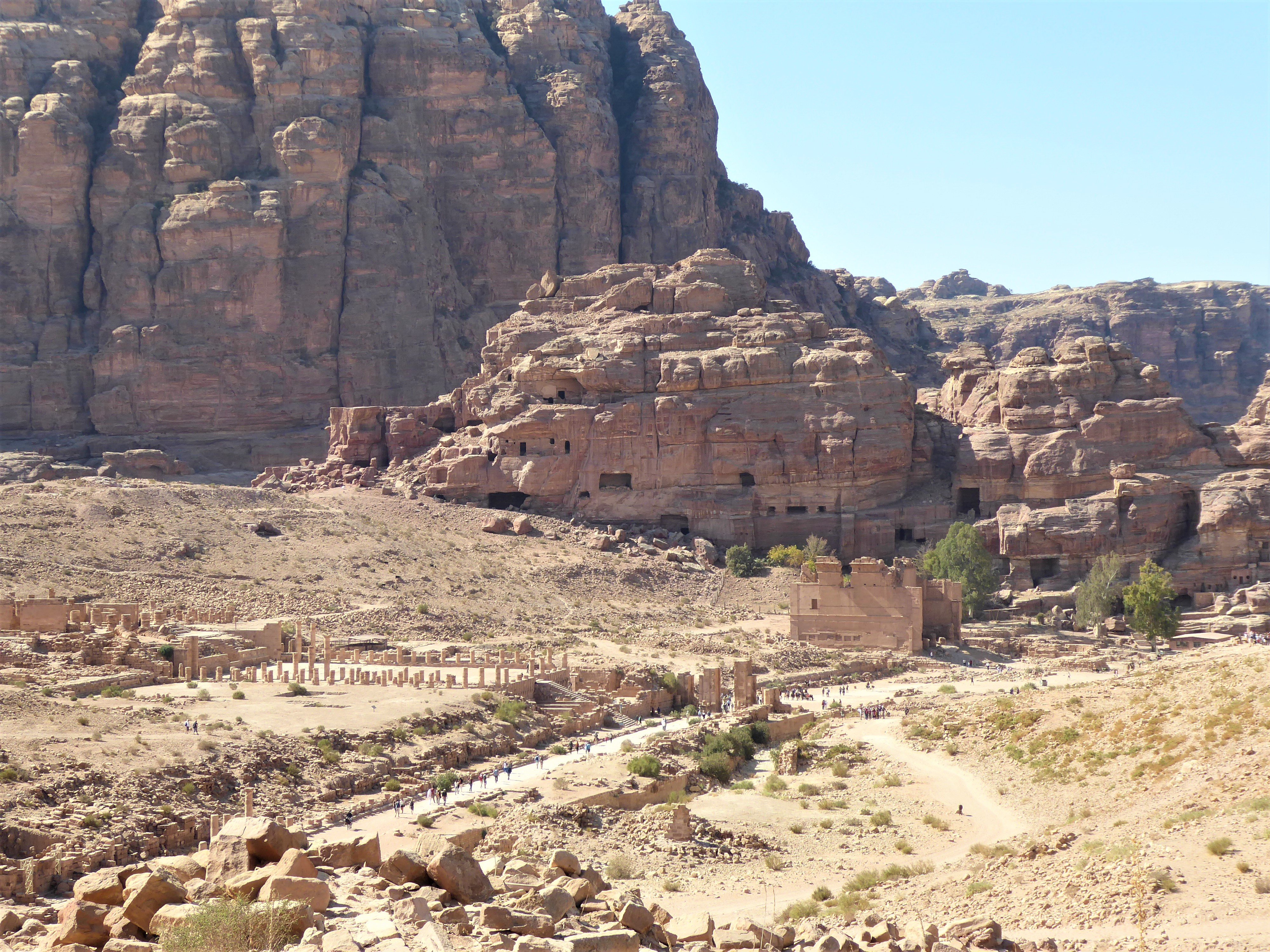Second day in Petra and I was raring to go, I’d start with the Al-Khubtha Trail which leads past the Royal Tombs, ending up with spectacular views of the Treasury. These Royal Tombs are unmistakable and unmissable, arcing across the face of the mountain they can be seen from everywhere in the valley. Sitting higher than most tombs on a natural platform at the base of the mountain, they glare over Petra from their position and sure size.
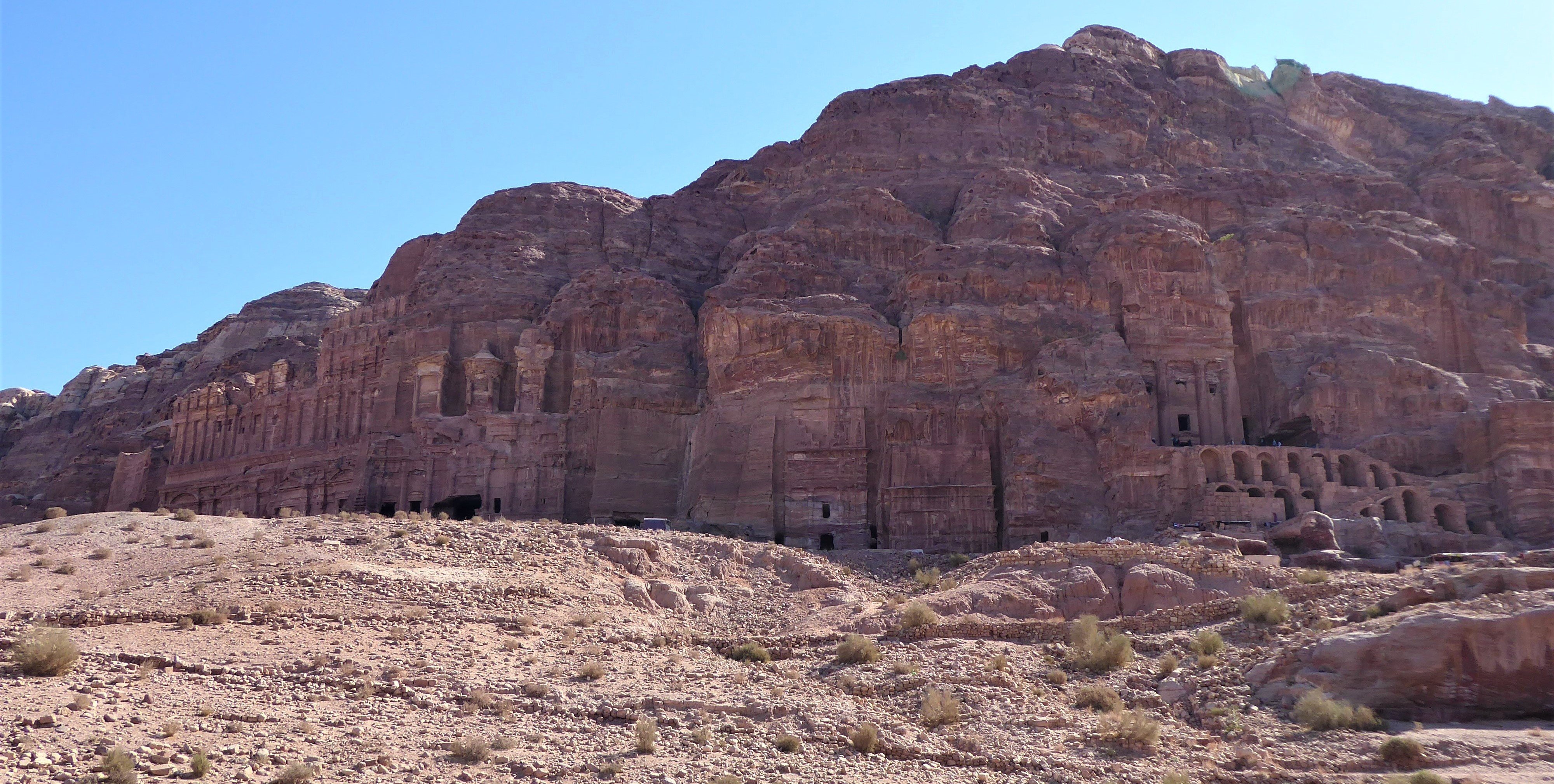
Urn Tomb
I’m repeating myself on this topic…the owner of this tomb is debatable even though it was probably built around 70AD, only to be changed in 446AD to be used as a Byzantine church. I couldn’t figure out what the bottom section with the archways is even after doing some research, but clearly doesn’t seem to be part of the original tomb; design, construction, disjointed position to the tomb etc. currently under restoration. Standing in front of the tomb after climbing some stairs, you get a real sense of the magnitude needed to make this tomb; cutting through the rock meters deep to get this façade result, amazing. Inside a huge rectangular tomb with perfect square corners and ceiling, niches cut into the back and side. The sandstone layers decorating the inside with flashes of layered colour, the ceiling a mix of black, pink-brown and white.

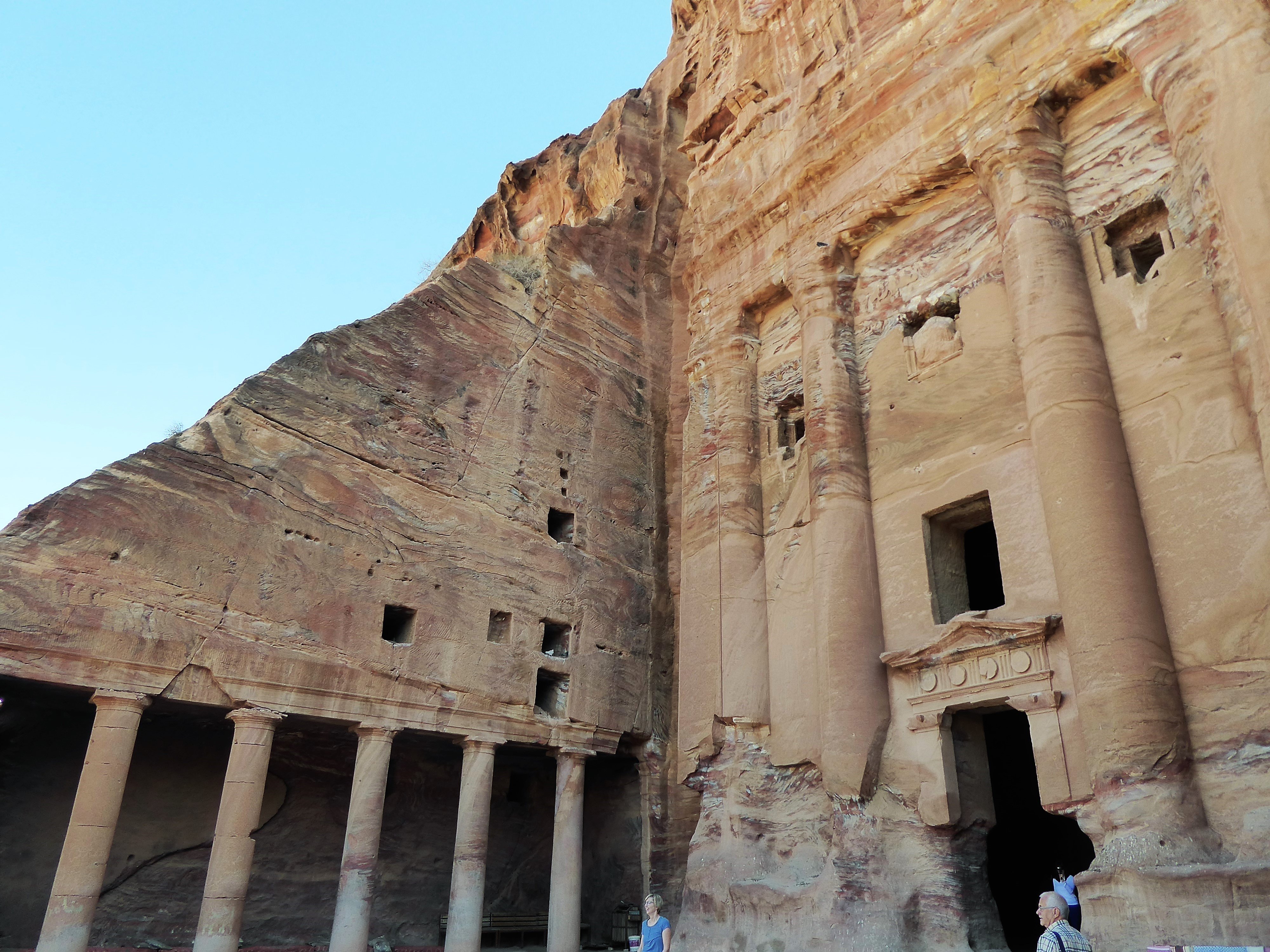
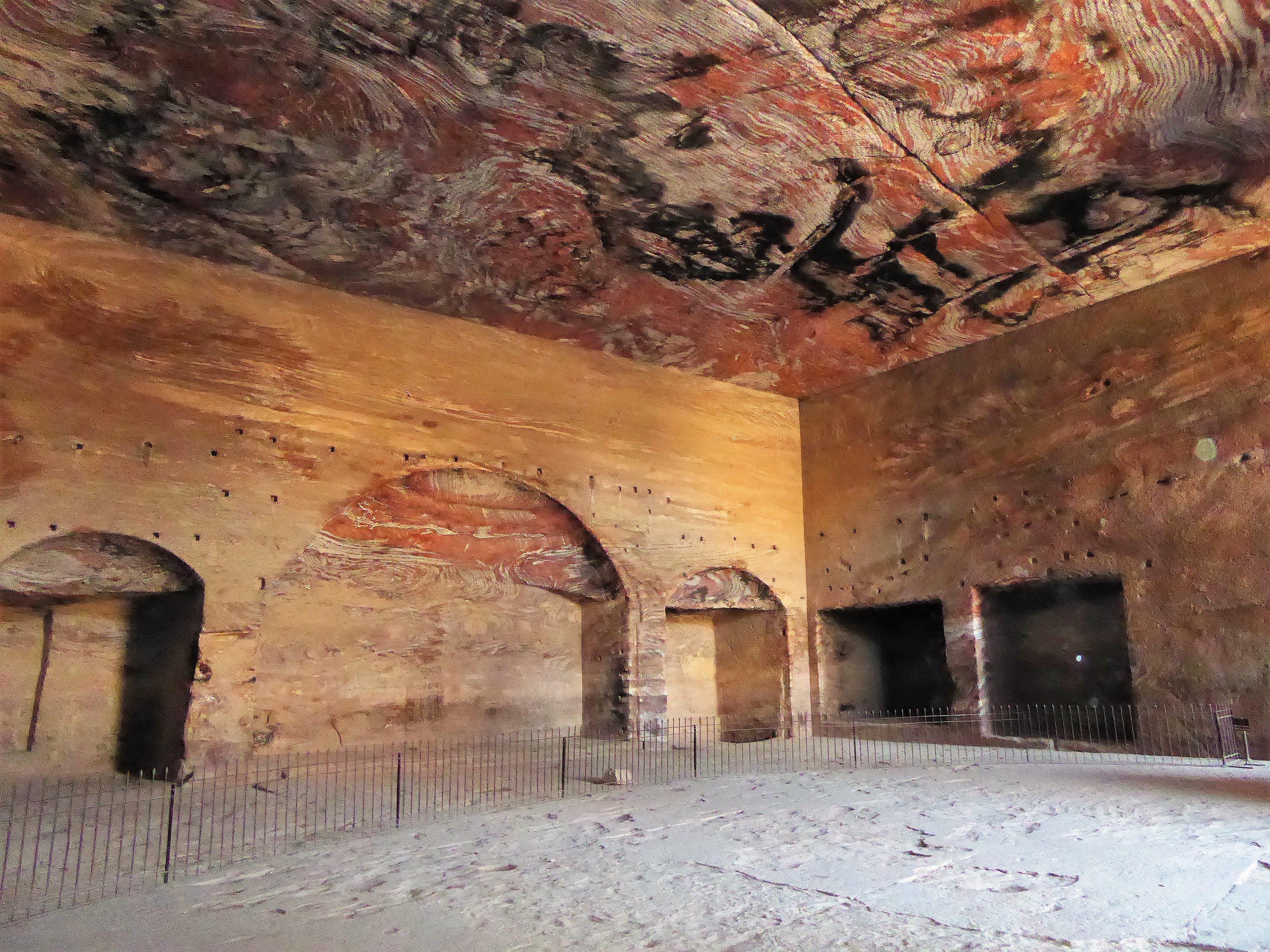
Silk Tomb
My disappointment with this tomb is only because for some or other reason none of my pictures came out well…and I mistook the tomb next to it as the Silk Tomb! Called the Silk Tomb because of its colourful exterior, an array of natural colours swirled across its façade with deep rich pink across the entrance tapering into light grey and orange at the top.

Corinthian Tomb
The most eroded of the tombs, it gets its name from the floral motifs on top of the capitals. Though very deteriorated it doesn’t take much effort to notice just how ornate the exterior is, or would have been, (no longer allowed to go inside) and very much in the same design as The Treasury, especially the top. Now you are not allowed to get near the entrance, so I couldn’t see the four water basis, I think they are at the entrance which where used in a cleansing ritual. I don’t know anything about this ritual, but many religions have a type of cleansing ritual.
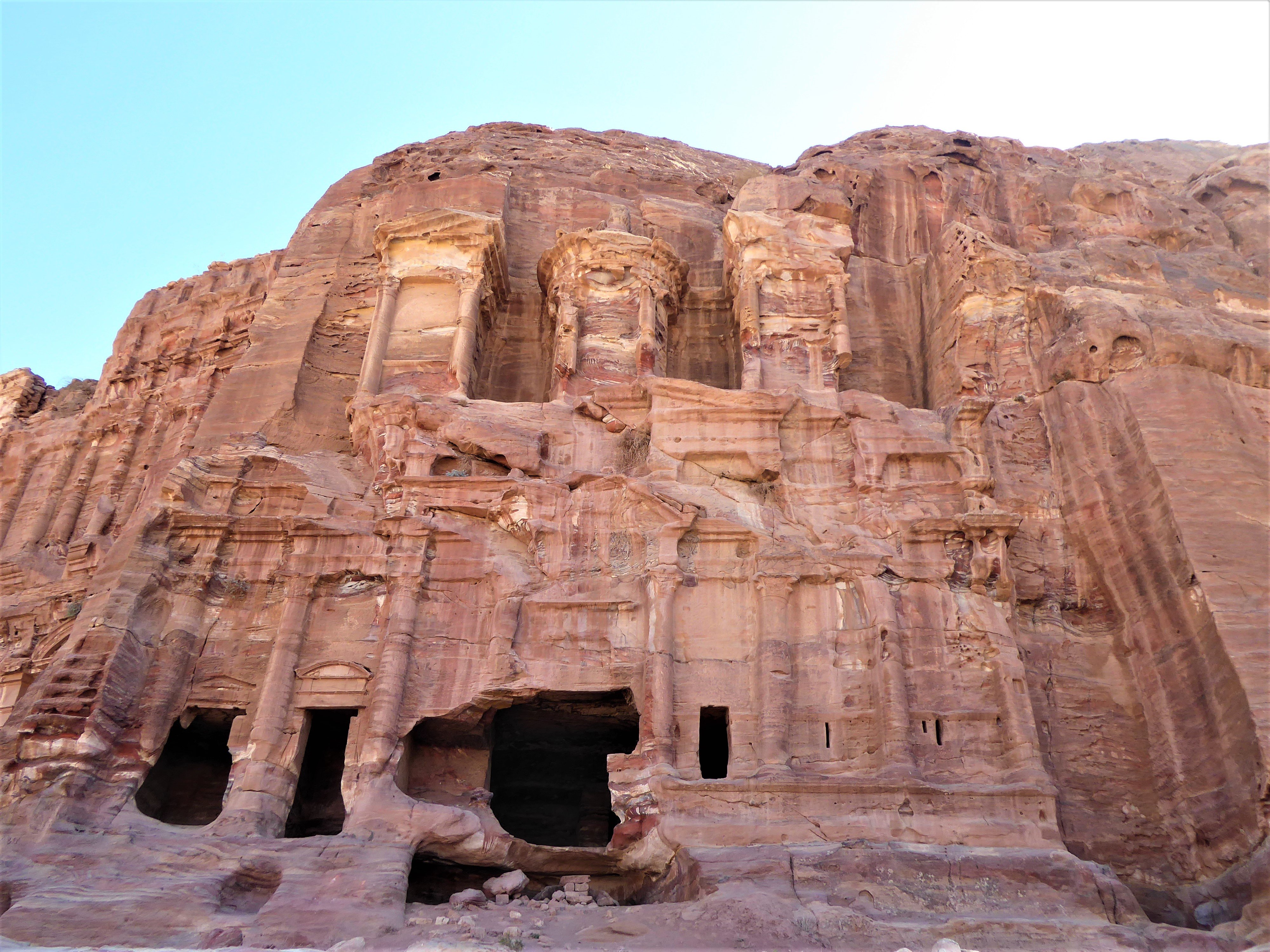
Palace Tomb
The biggest of the Royal Tombs at 49m wide and 46m high. The name comes from its appearance looking just as majestic as a palace, some say it is reminiscent of the Golden House of Nero palace, who knows. No matter what the resemblance it is worthy of the name palace. Like all these Royal Tombs, there is no actual evidence that they are linked to any royalty at all, it is purely speculation and taken that these are some of the biggest tombs, historically this would mean royalty or at the very least the very utmost echelons of society.
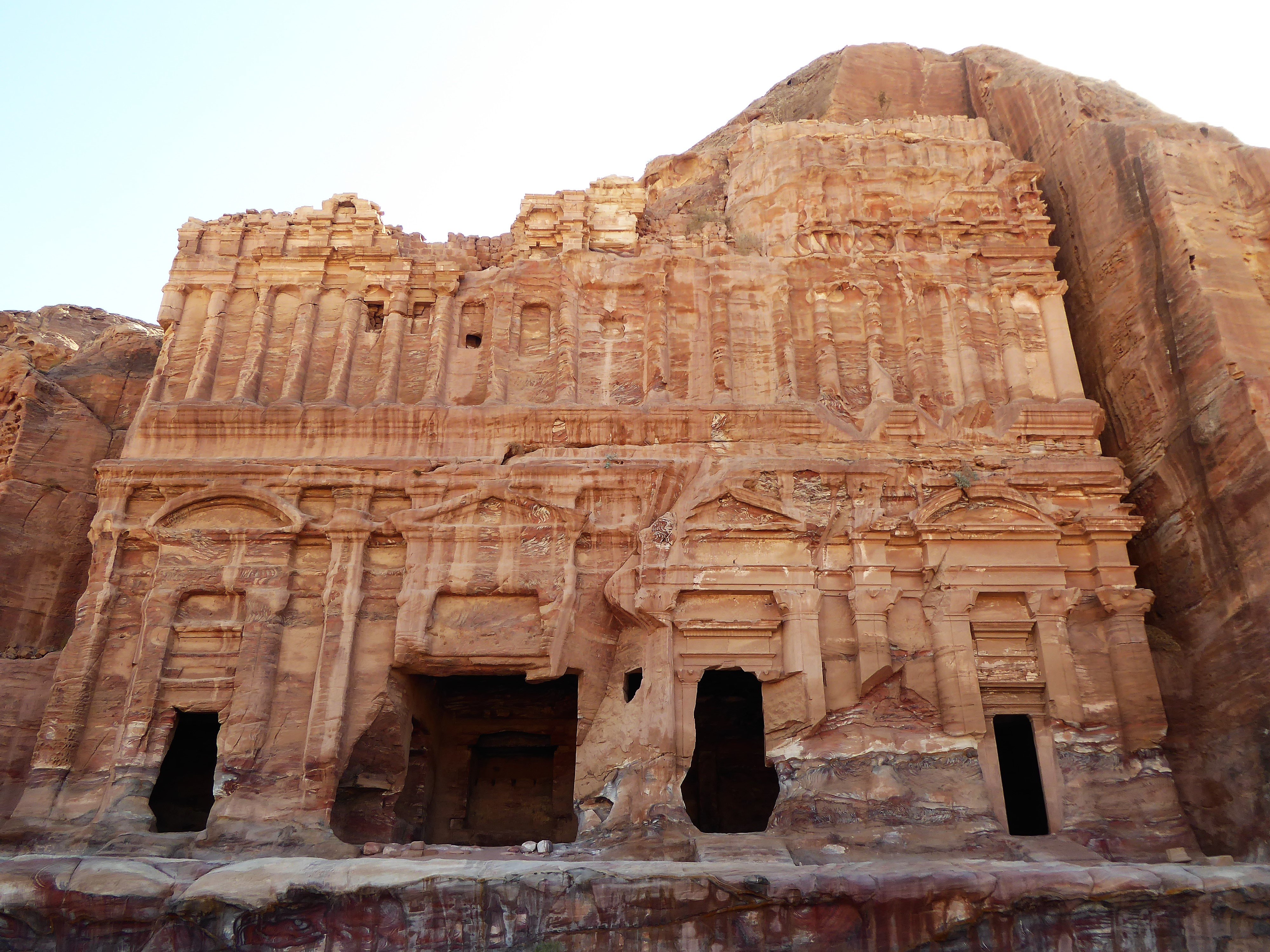
Amphitheatre
Walking past the Royal Tombs (facing them going left), you keep walking as if going behind the mountain, the path seems to go nowhere but then widens and you are faced with an old gate leading to, yes you got it stairs! Leading to the top of the mountain there are stunning views over the valley, here you get an amazing view of the amphitheatre! Constructed by the Romans, it is cut directly into the rock face and sheering into some older tombs. Like many of the amphitheatres I’ve seen the Romans use the natural angles of the mountain. If you look carefully you can see what used to be the seating and the smaller steps would be used as entry and exit from the seated area. The inside is off limits, but like other amphitheatres there are tunnels under the seating to enable people to move about just like any modern stadium.
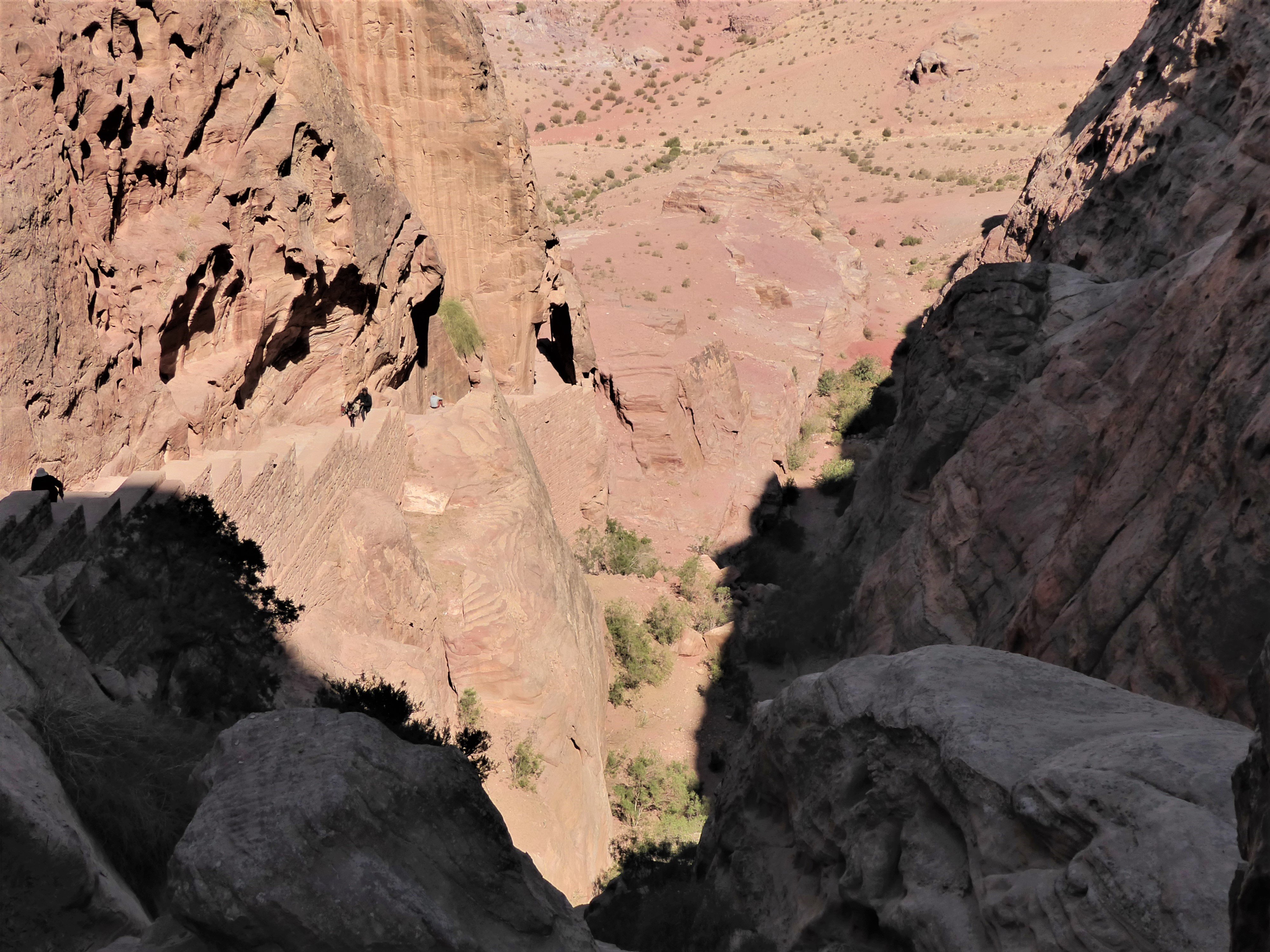

On top of the mountain there are a few structures and what remains of a temple now almost totally unrecognisable. As I mentioned in Part 2, there are cisterns dotted around all the mountain tops, here is no different with one having an altar too.

The views from up here are great and there is certainly archaeology here to explore too, however most people come here to get a different view of The Treasury. The path leading to this viewpoint isn’t well marked but you don’t need to be a tracker to figure it out. From the top of the mountain you walk another 1km at most, maybe only 800m – it takes a little longer than normal because of the condition of the path, it’s not great but very doable. I’ll let the view of The Treasury speak for itself. It was still early morning, so I headed back down the stairs and headed to the Byzantine Church, on the right-side of the Colonnaded Street.

Byzantine Church
The Eastern Roman Empire or Byzantine Empire ruled over an extended period of time circa. 285 – 1461 and it was during the earlier parts of this period that the church was built. There is evidence that the church was build on top of a pre-existing structure, likely a Nabataean religious site. Construction began in circa. 450 and added to between 500-550, some have rumoured that it was a working cathedral in the 5th-6th century, but very little evidence can prove this. No matter till when it was used, what remains shows a wealth community and no doubt church too. This couldn’t have been just any old outpost either, the church has magnificent mosaics with one depicting the different seasons. The whole floor used to be adorned with mosaics but now only the what would be the side passages remains, on one side a solid white and light grey marble altar stands too. The church is in its current state for a few reasons, earthquakes, the abandonment of Petra, no doubt looting and just time.
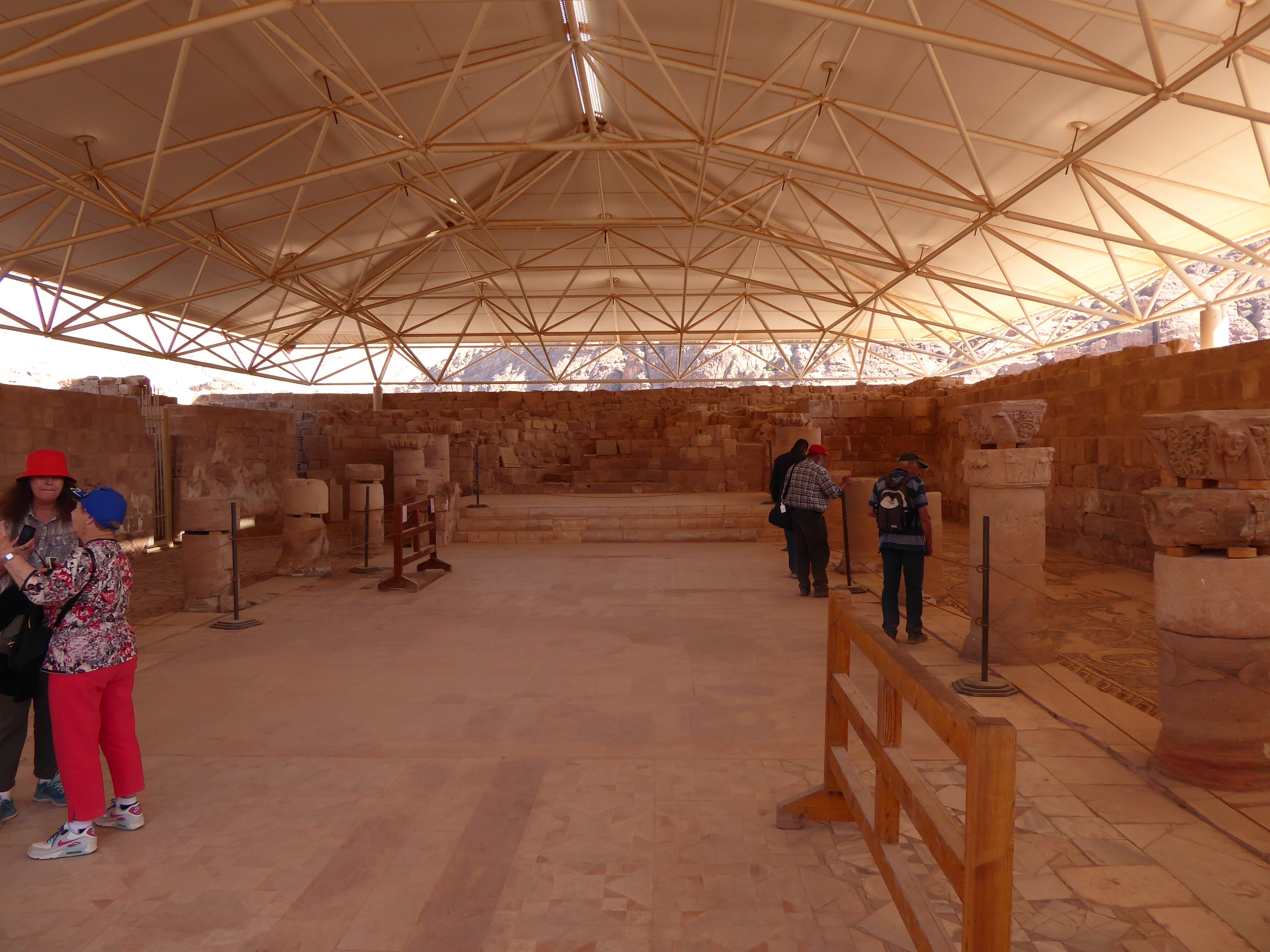

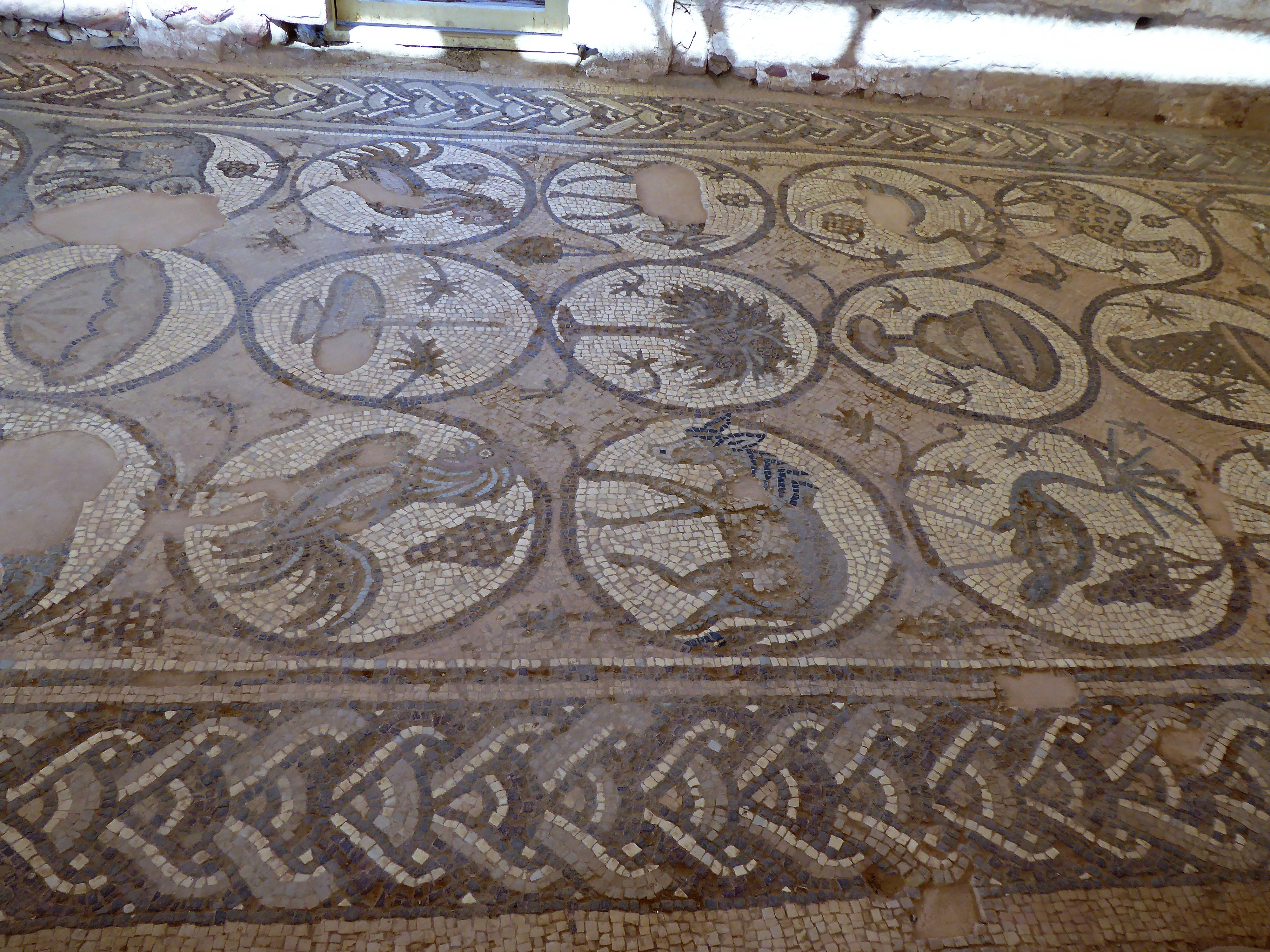
This side of the Colonnaded Street seems empty from a distance but there is an abundance of archaeology here if you take the time to look. Remnants of buildings lie everywhere, and the authorities along with overseas Universities are busy unearthing what lies beneath and restoring what they find. Just a few to mention The Winged-Lion Temple, Blue Church/Chapel (closed whilst I was there), Ridge Church, the Nymphaeum and so many other structures I have no idea what they are, some are massive. Also, the view of Great Temple and Garden and Pool Complex on the opposite side of the Colonnaded Street is also great!
Great Temple
Crossing over the paved road of the Colonnaded Street the Great Temple covers an area near 7500 square meters, it is massive, right next to it is the Garden and Pool Complex. The latter Pool Complex was a communal area like a Roman Bath for the general public complete with hot and cold rooms and hot and cold pools. Some of the hypocaust tiles can still be seen, but what is very impressive is the furnace room as it is still largely intact; this is where the fire would be made to heat the complex with the help of the hypocaust floor and a labyrinth of chimneys and piles channeling the heat where they needed.

The Great Temple is vast and excavation work is still being done on it every year. It covers a vast area and would have dominated the area yet very accessible considering its location to the Colonnaded Street where the market and trade of everyday life happened. Within the upper part of the temple is a small amphitheatre, which has been restored. I read somewhere that this could have been used for small concerts, but I disagree, they already had an amphitheatre just up the road. No, I think if you consider where the temple is and that it is right next door to the public baths this is more likely to be where they held meetings, like a council meeting – for counsellors and where some public could attend. Either way, this is a grand temple where no expense was spared, time, effort and organisation on a large scale was put into place to make this not just a functioning temple but eloquently and intricately decorated throughout.
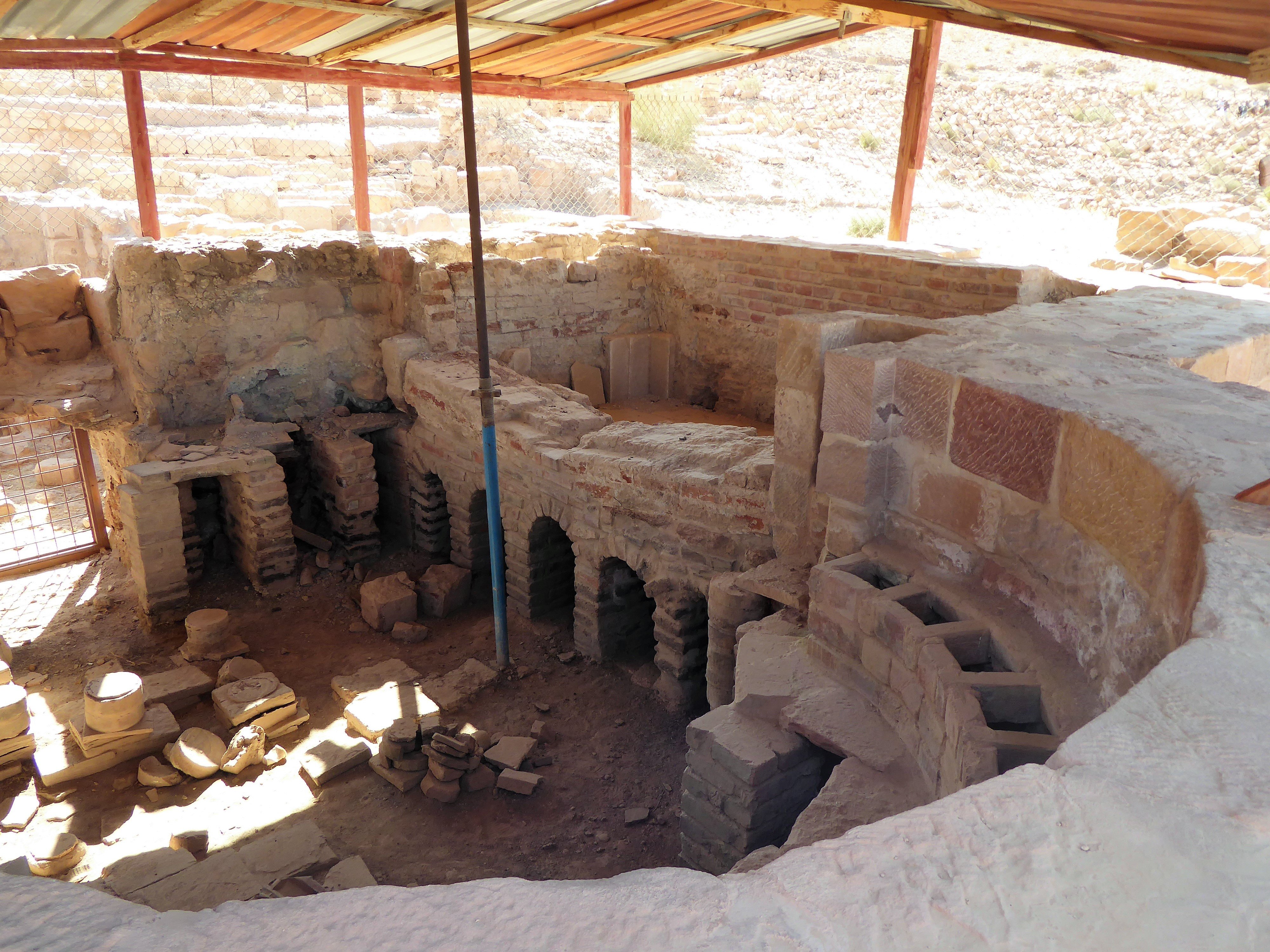
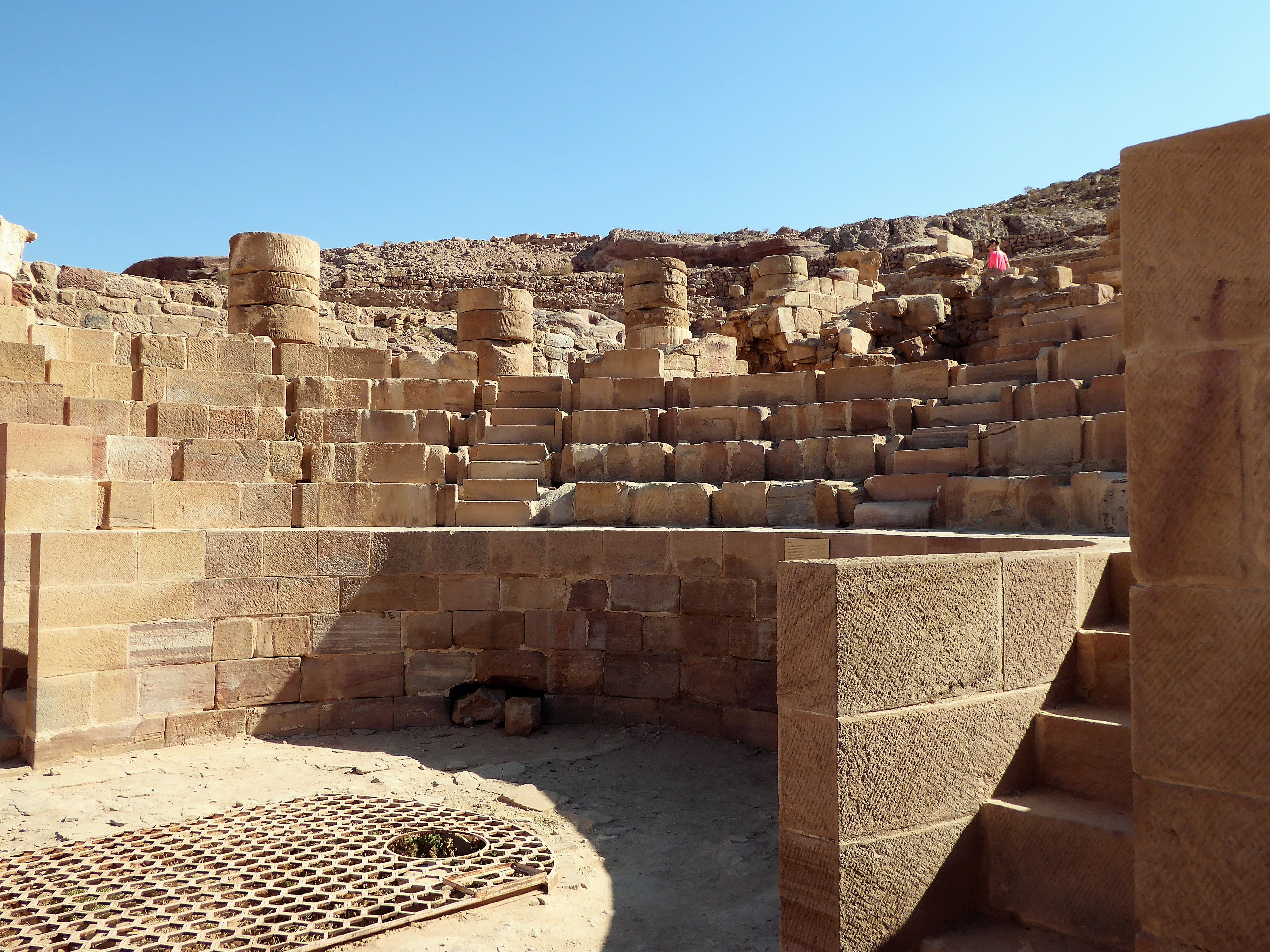

Time was still on my hands, it had just gone lunchtime, so I headed off to the restaurant area to eat my packed lunch. Issaam told me that there was an additional path just before you enter the Siq, you go through a tunnel dug in antiquity to channel the water – an engineering feat by itself! This trail leads through the dried river and ends up at the back of the Al-Khubtha trail. Cutting long story short, after pleading to the police and speaking to his superior on the phone the answer was still no, if not taken by a guide they no longer allow people to go alone. A small consolation was that after more chatting to the policeman he allowed me to try an unmarked route, going behind the Djin Blocks.
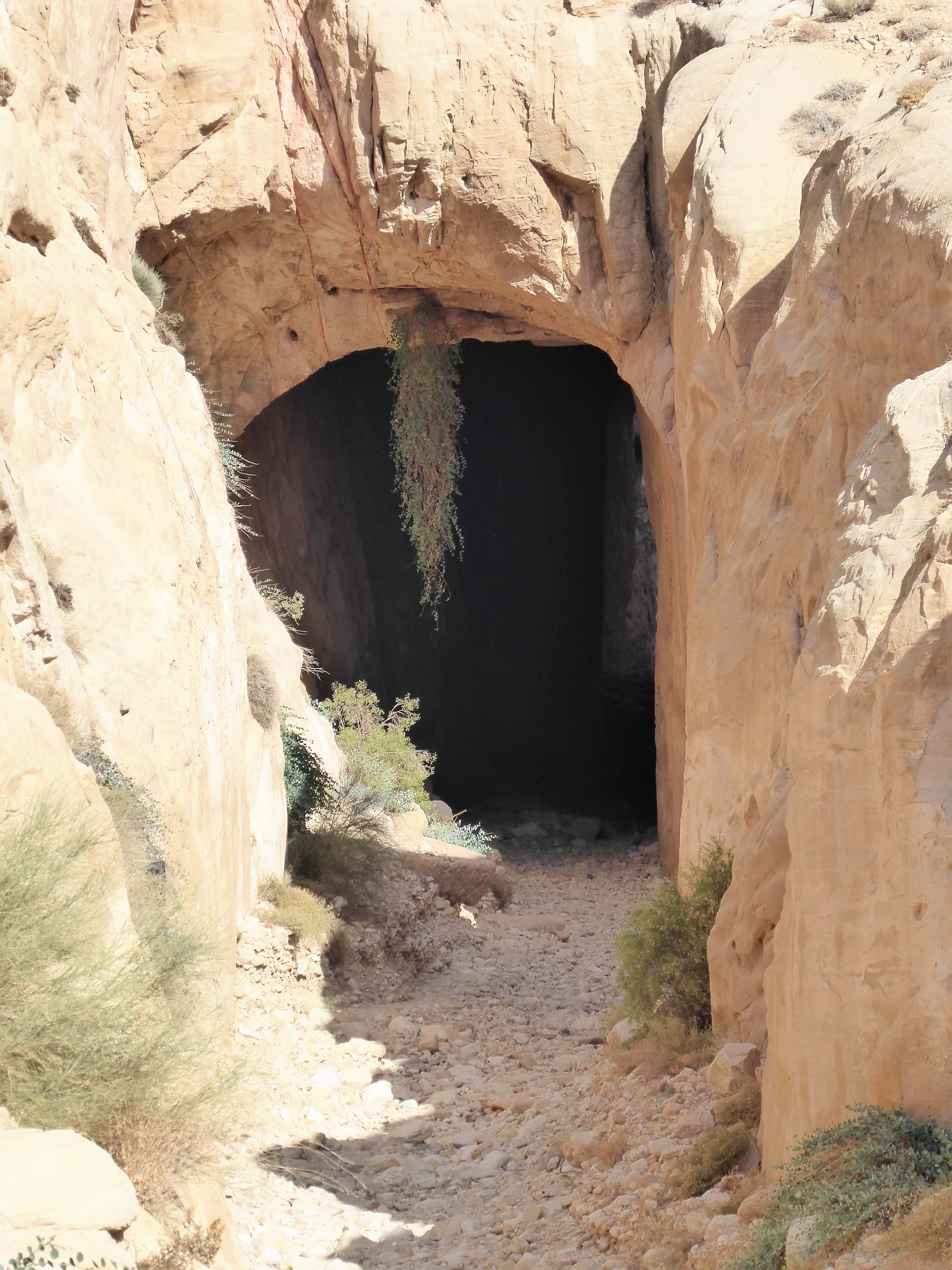
It was an interesting route even though there isn’t much, the landscape a different colour to the rest of Petra, a lime-grey rock and barren. Even out here where the stone is harder than that of the sandstone in Petra there is lots of evidence of water management and construction. Some of the construction camouflaged buy the colour but perpendicular and right angles break the natural contours of the rock to show where man has been. I walked a few kilometers, maybe 3, there wasn’t much to keep me busy on my “new” route so I thought I’d take a look at the blue route a.k.a Al-Madras trail – at only 1.5km long it would fill the time and I’d have an early finish too.
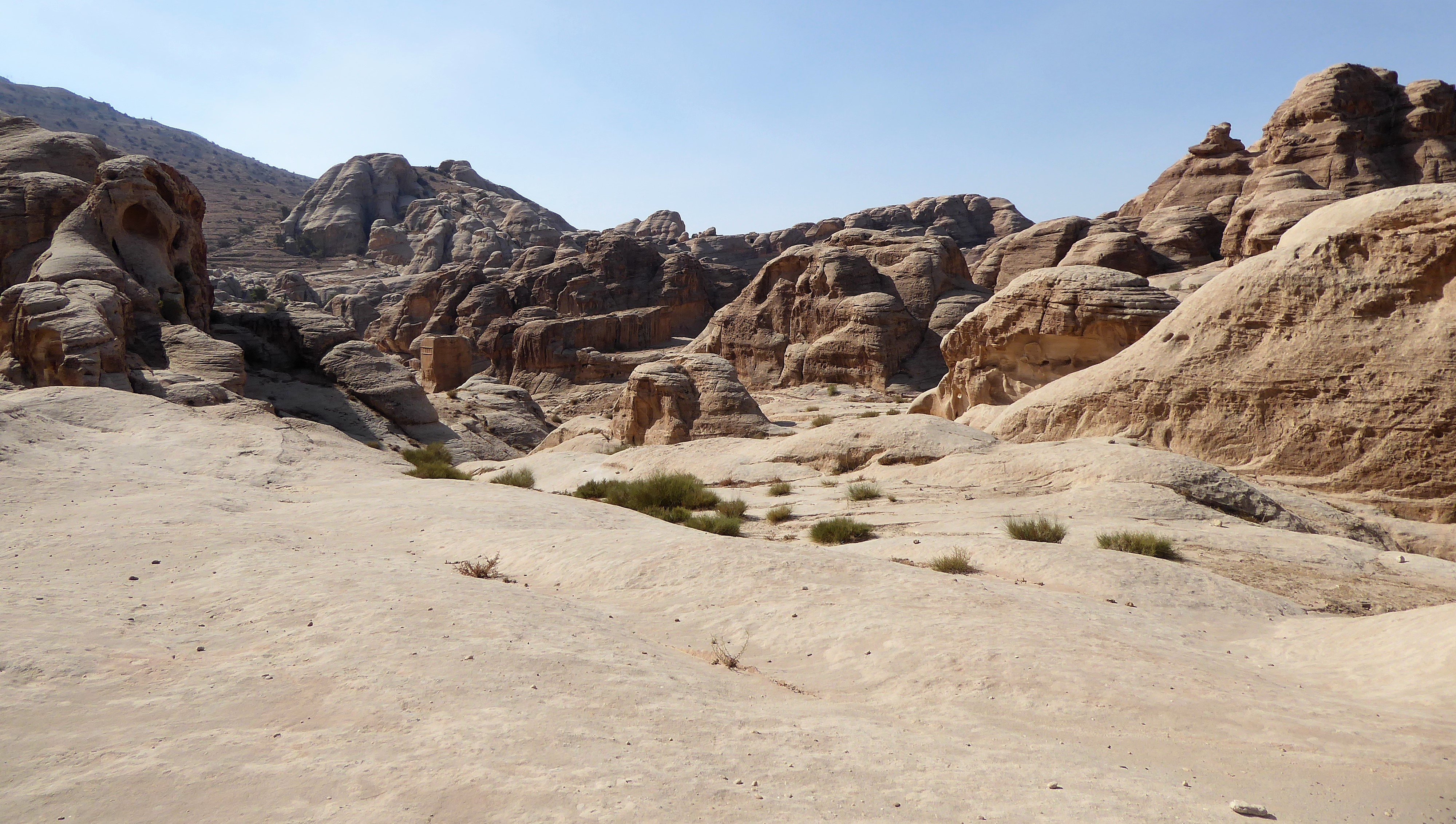

The Al-Madras trail is extremely underrated, especially if you carry on linking up with the High Place of Sacrifice Trail, it’s a brilliant route – may not be for everyone as there is some real steep sections, up and down. The first part of the route is interesting, not wow but a different terrain, the middle part is hiking through flat rocky desert like valleys but the last third is challenging and rewarding. In short, it takes you to the viewing point behind The Treasury, just like the Al-Khubtha trail but on the opposite mountain, fantastic view!
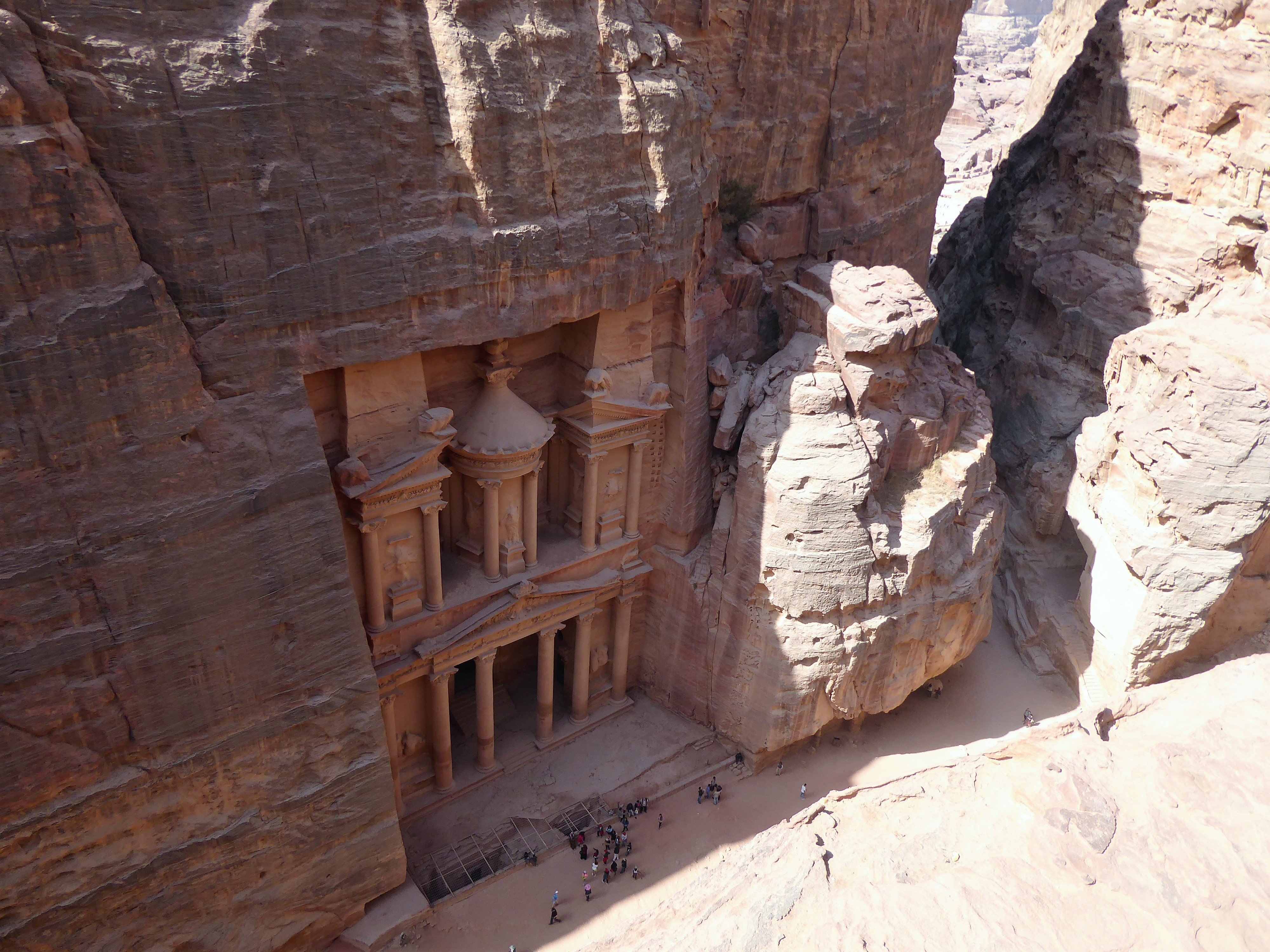
If you don’t want to continue on this trail, which leads to the High Place of Sacrifice, you can head straight down, it’s steep and many people prefer just to carry on and use the stairs. This way does have stairs, but they are vertical and more like rock climbing to an extent.

Although I stayed in Petra for another day I didn’t do much, the pin like pain on the side of my right knee was killing me the day before, I had to compensate the way I was walking for most of the day. I used my third day in Petra to head down and take a few more pictures of the Siq and The Treasury early in the morning, the rest of the wasn’t rock ‘n roll, no I caught up on writing.
I really cannot express how much I enjoyed Petra, everything about the place was amazing. Petra shocked me with how much it has to offer and on show, yes, it is a World Heritage site but I bet the majority of people don’t know just how expansive the area is. Jordan was getting better and better, a real quite gem that is hidden away is a raucous neighbourhood. Petra to me is a 3 star Michelin Restaurant, it is well worth going totally out of your way to go and see this marvellous wonder city of ancient times.
Here are the links to Part 1 and Part 2 of my time in Petra. Below are just a few additional pictures from the day
